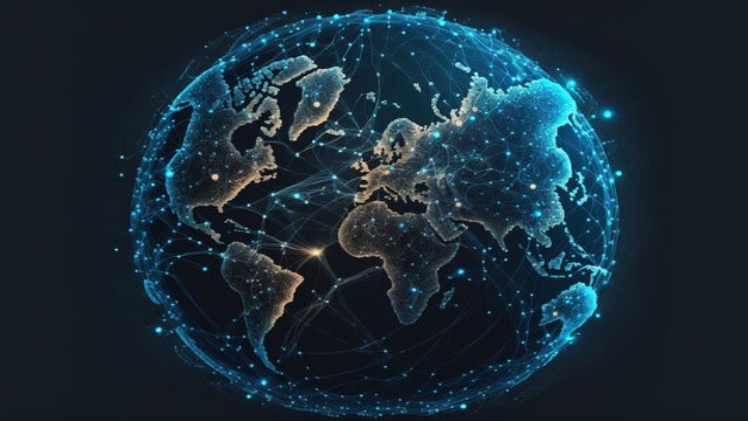In the vast expanse of the digital age, where the world is literally at our fingertips, online shopping has become a beacon of convenience and efficiency. It’s like having a global marketplace in the comfort of our own homes, where every desire, necessity, or whim can be fulfilled with a simple click. Yet, as we navigate through this sea of endless possibilities, the undercurrents of cyber threats lurk, ready to exploit the unwary shopper. This journey into the realm of online shopping security is not just about safeguarding our digital transactions but about protecting the sanctity of our personal space in the digital world. With the right security features in place, we can shop with confidence, knowing that our digital footprints are secure.
Embrace the Basics: Understanding the Risks
Imagine stepping into a bustling market, the air filled with the chatter of vendors and the scent of fresh produce. Just as you would be cautious of your wallet in such a setting, online shopping requires a similar vigilance. Cyber threats, like pickpockets in crowded places, are always looking for an opportunity. From phishing scams that mimic legitimate websites to malware that sneaks in through seemingly harmless downloads, the risks are as varied as the goods on offer in the digital marketplace.
The Cornerstone of Safe Online Shopping: Strong Passwords
Our first line of defense in the digital realm is as simple as it is crucial: strong passwords. These are the keys to our online identities, the guardians of our digital homes. A strong password is like a complex lock on the door, deterring would-be intruders. Use a mix of letters, numbers, and symbols, and avoid common words or phrases. Consider a password manager to keep track of your passwords, ensuring that each account has its unique key.
The Seal of Trust: HTTPS and SSL Certificates
When shopping online, the presence of HTTPS in the URL is akin to a seal of approval, a sign that the website has taken steps to secure the connection between your browser and their server. Look for the padlock icon in the address bar—a beacon of trust in the sea of online retailers. This symbol, along with an SSL (Secure Socket Layer) certificate, ensures that your data is encrypted, making it much harder for cyber thieves to intercept.
Navigating the Waters: Recognizing Secure Websites
Just as a seasoned sailor can navigate treacherous waters, so too must online shoppers learn to recognize the signs of secure websites. Beyond HTTPS and SSL certificates, look for clear contact information, privacy policies, and trust badges from recognized security providers. These elements are the lighthouses guiding you to safe harbors in the online shopping sea.
The Watchful Guardians: Security Software
Before embarking on your online shopping journey, ensure that your digital vessel is equipped with the latest security software. This includes antivirus programs, anti-malware tools, and firewalls—your loyal crew members dedicated to protecting your journey from unseen threats. Regular updates are crucial, as they equip your defenses with the latest knowledge of cyber threats, much like updating sea charts for safe navigation.
The Double-Edged Sword: Public Wi-Fi
The convenience of public Wi-Fi is a double-edged sword. While it offers the freedom to shop from anywhere, it also opens doors to potential cyber threats. Using public Wi-Fi for online shopping is like discussing your bank details in a crowded room—risky. If you must use public Wi-Fi, consider a VPN (Virtual Private Network) to encrypt your connection, creating a private corridor in the public space.
The Art of Discretion: Personal Information
In the world of online shopping, discretion is a virtue. Share personal information sparingly and only when necessary. Be wary of requests for information that seems irrelevant to your purchase. This caution is akin to guarding your wallet in a crowded market, revealing only what is needed and keeping the rest secure.
The Safety Net: Payment Methods
Credit cards and payment services like PayPal offer a safety net in the form of fraud protection and dispute resolution, acting as buffers between your bank account and potential cyber threats. Using these services is like having a trusted intermediary handling your purchases, adding an extra layer of security to your transactions.
The Path Less Traveled: Avoiding Oversharing on Social Media
In the excitement of a good deal or a pleasant shopping experience, the urge to share on social media can be strong. However, oversharing can inadvertently provide cyber thieves with puzzle pieces of your personal information. Be mindful of what you share, keeping your digital footprint as light as possible.
The Final Checkpoint: Monitoring Your Accounts
Regularly monitoring your bank and credit card statements is like scanning the horizon for ships. It enables you to spot any unauthorized transactions quickly, allowing you to take swift action. Early detection is key to minimizing damage and navigating your way back to safety.
The Beacon of Knowledge: Educating Yourself and Others
In the digital age, knowledge is not just power; it’s protection. Stay informed about the latest cyber threats and security practices. Share this knowledge with friends and family, for a well-informed community is a well-protected one. Together, we can create a safer online shopping environment for everyone.
Conclusion: Shopping with Confidence in the Digital Marketplace
As we chart our course through the online shopping world, armed with the right security features and knowledge, we can navigate with confidence, enjoying the convenience and variety that the digital marketplace offers. The journey of online shopping security is ongoing, a continuous process of learning, adapting, and applying. By taking these steps to protect ourselves, we not only secure our personal information and financial well-being but also contribute to a safer, more trustworthy online community. Let’s embrace this journey with vigilance and wisdom, ensuring that our online shopping experiences remain joyous voyages of discovery, free from the shadows of cyber threats.

